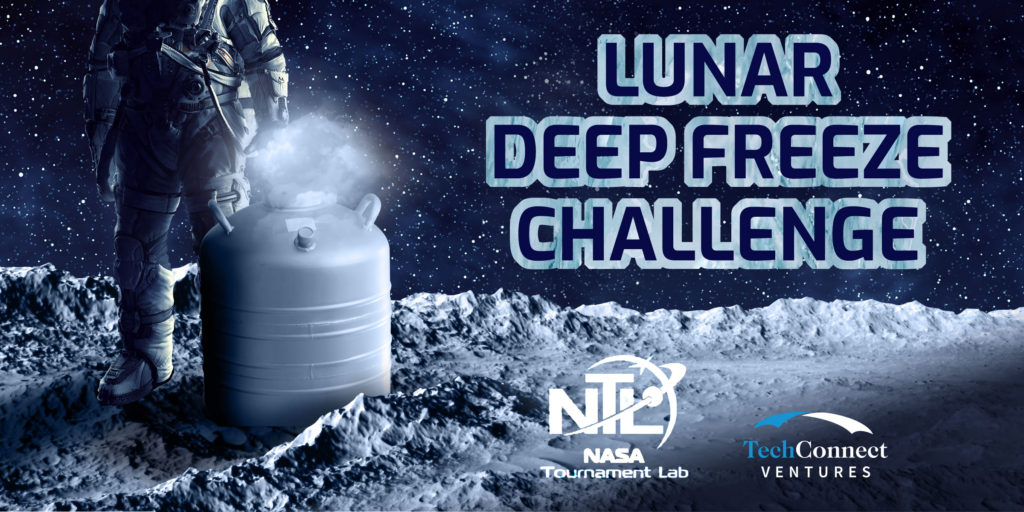
NASA has a mission critical need for novel small-footprint, lightweight, and low-/no-power cryogenic (less than -150°C) containment solutions that will enable long-term storage and transportation of lunar material samples back to Earth.
In 2024, NASA’s Artemis program will return astronauts to the Moon for the first time in over 50 years. One of the primary objectives of Artemis will be to explore the permanently shadowed regions (PSRs) at the south pole of the Moon. PSRs are extremely cold (less than -200°C), with frozen conditions that are ideal for trapping and accumulating water, volatiles, and possible organics in the form of ice.
Samples from these unique locations have significant scientific and technological value, and may provide key insights that benefit future lunar missions. The Artemis team is considering plans to return such samples from a PSR near the lunar south pole while preserving them in their original, frozen state (i.e. without melting, release of volatiles, release of entrapped materials, etc.), in order to analyze them upon return to Earth. The lunar surface samples will be collected in a NASA-designed sample container (note: design of this separate container is not part of this Challenge), which will have to be cryogenically contained (at or below temperatures of -150°C) and transported back to Earth. Failure to maintain a frozen state during transportation would result in sample loss from physical and chemical degradation, as well as introduction of potentially hazardous out-gassing.
The anticipated time from collection to Earth splashdown is about two weeks and will be carried out across multiple crewed vehicles from which the sample containers and/or cryogenic containment units must be transferred. Each of these vehicles faces a range of technical challenges (see Table 1) that currently prevent successful cryogenic stowage and include:
- The Human Landing System (HLS), which will take astronauts to the lunar surface
- The atmospheric re-entry capsule, Orion
- Gateway, the lunar orbiting outpost where both HLS and Orion may dock to facilitate Earth re-entry from lunar orbit
| Vehicle | Duration of Cryogenic Stowage Required | Key Challenge(s) |
|---|---|---|
| Human Landing System (HLS) | Up to 2 days | 1. Minimal available space 2. Minimal available power |
| Gateway | Up to 5 days | 1. Longevity of cryogenic system |
| Orion | Up to 6 days | 1. Minimal available space 2. Minimal available power 3. Longevity of cryogenic system 4. Operation during re-entry |
All systems and approaches currently available to NASA fail to adequately meet the performance (e.g. temperature, longevity, etc.) and design (e.g. size, mass, power, etc.) requirements for this Artemis mission, particularly onboard the small and highly optimized Orion capsule.
As an example of the current limitations, International Space Station flight systems exist that can generate temperatures of -150° C, but they are similar in size to a standard locker freezer and thus too large, heavy, and power-intensive for the HLS or Orion vehicles. Conversely, solutions that are smaller and lighter exist but do not reach sufficiently cold temperatures or cannot maintain those required temperatures for long enough time periods to be of use. Likewise, many other solutions that are available on Earth are simply not viable for operations in space due to safety hazards to the crew.